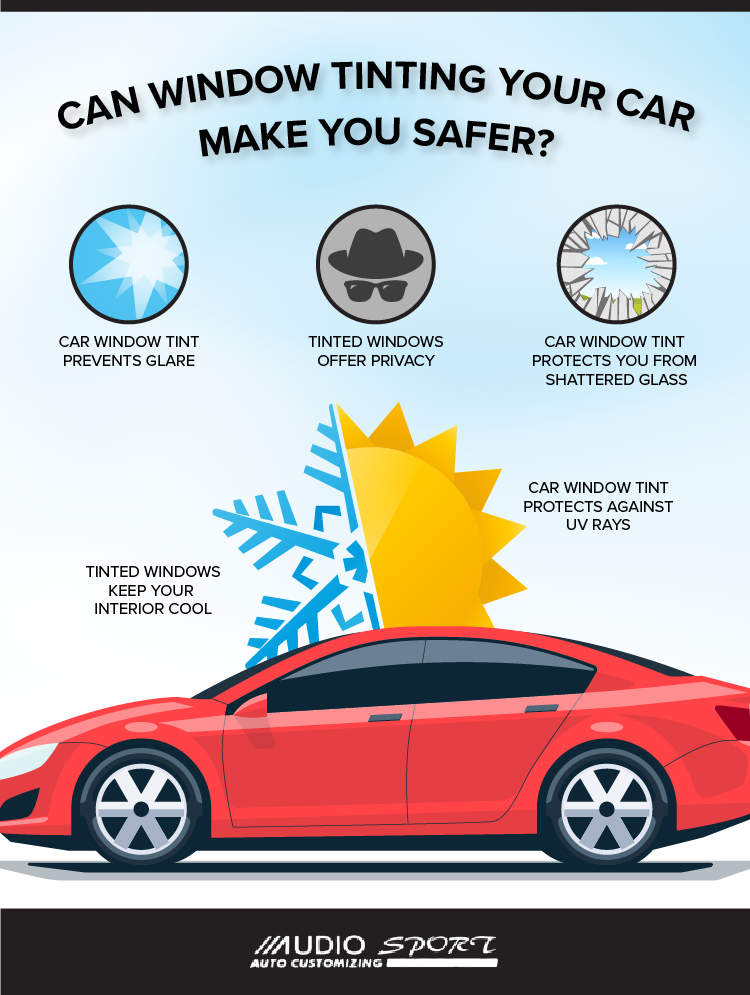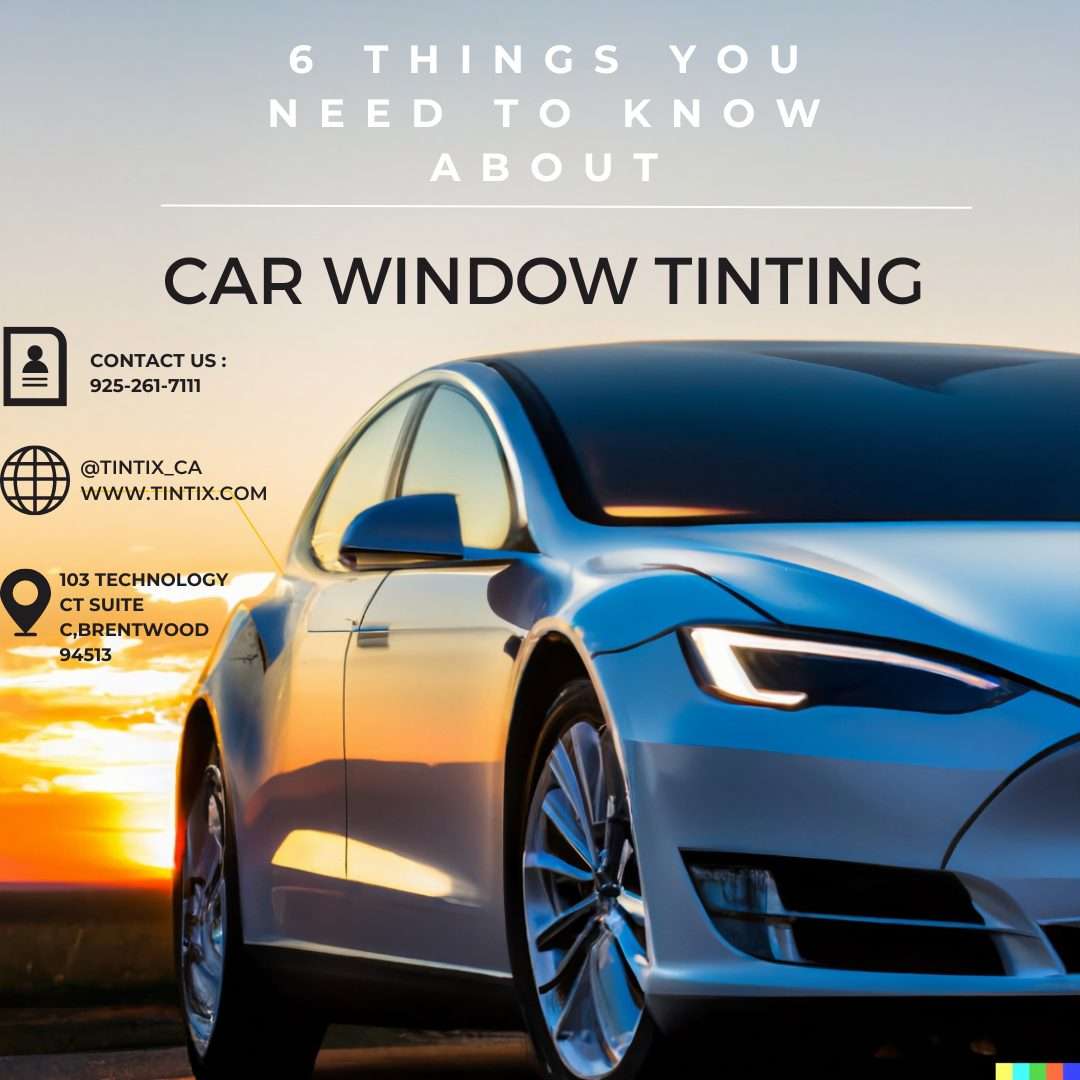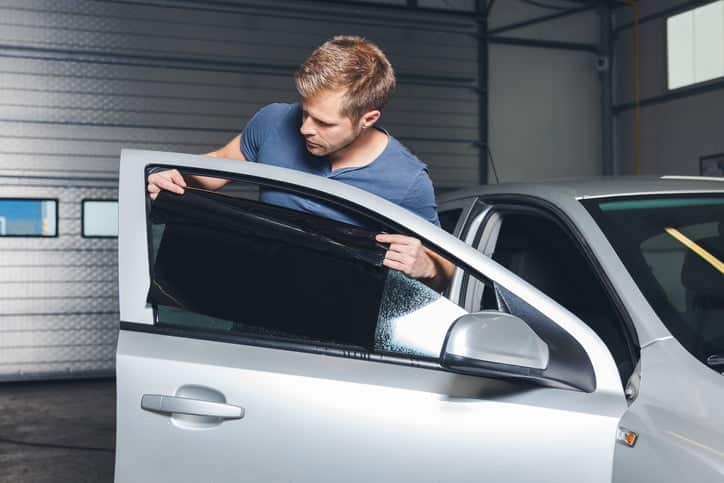A Comprehensive Overview to Comprehending Auto Window Tint and Its Advantages
Car window tinting offers greater than simply a visual function for automobiles. It provides different kinds, each with unique functions and advantages. Understanding these options, in addition to lawful regulations and maintenance suggestions, is necessary for any automobile proprietor. The advantages may greatly improve driving convenience and automobile durability. As one explores the subtleties of window tinting, the concern occurs: what sort of color is best fit for individual needs?
Understanding Auto Window Color: What It Is and Exactly how It Functions
Automobile window color functions as a safety obstacle that boosts automobile aesthetics while providing practical advantages. This slim movie is related to the interior surface of vehicle home windows, reducing glow and obstructing unsafe ultraviolet (UV) rays from the sun. By filtering system sunlight, automobile window tint assists to regulate the interior temperature level of the car, leading to boosted convenience for passengers and lowered dependence on air conditioning.Additionally, it shields the lorry's inside from fading, preserving both furniture and dashboard materials. The color can additionally improve privacy, making it harder for outsiders to see inside the vehicle. Certain kinds of window tint can increase security; in the occasion of a crash, the movie assists hold shattered glass with each other, lowering the risk of injury from flying fragments. In general, automobile window tint serves both sensible and aesthetic purposes, making it a prominent choice among automobile proprietors.
Sorts Of Home Window Color: An Introduction of Options
When taking into consideration home window tint options, a number of types are offered, each with distinct characteristics. Colored, metalized, and ceramic home window tints offer varying levels of heat rejection, UV defense, and visual appeal. Comprehending these distinctions can help car owners make notified choices based upon their choices and requirements.
Dyed Home Window Color
Colored home window color stands for a preferred choice amongst vehicle owners looking for a efficient and budget-friendly way to boost their vehicle's appearances and personal privacy. This kind of tint is developed by positioning a layer of dye in between a glue layer and a protective covering, resulting in a darkened appearance that minimizes glow and boosts aesthetic convenience. While colored home window tint successfully blocks dangerous UV rays, it might not provide the very same level of warmth rejection as other color kinds. Additionally, its shade can fade over time, potentially diminishing its efficiency. In spite of these disadvantages, dyed home window tint continues to be popular for its cost-effectiveness and capability to give a sleek, fashionable look to numerous car models.
Metalized Home Window Color
Metalized home window tint uses a balance of design and functionality, making it a popular selection amongst automobile owners. This sort of color includes metallic fragments within the movie, improving both aesthetic allure and warm being rejected. The reflective high quality of metalized tint helps to minimize glare and improve personal privacy, while likewise providing UV security, which safeguards the lorry's inside. Additionally, metalized home window color can enhance home window toughness, potentially preventing shattering during mishaps. However, it is essential to note that the metal parts can hinder digital signals, such as GPS and cellular phone function. Generally, metalized window tint offers an effective option for those looking for a combination of sun, toughness, and appearance protection for their vehicles.
Ceramic Home Window Color
Ceramic home window color represents an advanced choice in the range of vehicle home window movies, using distinct advantages over traditional colors. Unlike dyed or metalized films, ceramic tints utilize advanced ceramic particles, which successfully reject warmth and UV rays without compromising visibility. This technology ensures that automobiles stay cooler, decreasing dependence on cooling and enhancing fuel performance. Furthermore, ceramic home window colors are less most likely to hinder electronic devices, such as general practitioner or mobile signals, making them a sensible selection for modern-day vehicles. Their sturdiness and scratch resistance add to a much longer life expectancy contrasted to various other kinds of colors. Generally, ceramic window color offers superior efficiency, convenience, and protection, making it a favored option for critical vehicle owners.
Advantages of Vehicle Window Tint: Beyond Looks
While lots of people associate car home window color with improved style, its advantages expand much beyond simple looks. One significant benefit is warm decrease; home window tint can obstruct as much as 99% of damaging UV rays, protecting and maintaining the interior cooler upholstery from fading. This not just enhances convenience throughout warm weather but also minimizes dependence on air conditioning, causing boosted gas efficiency.In enhancement, vehicle window color offers an added layer of privacy and safety. Colored windows make it challenging for outsiders to see inside the lorry, which can prevent burglary and safeguard prized possessions. Additionally, several tints enhance the glass, reducing the probability of ruining in case of a crash, thereby boosting safety.In enhancement to these practical benefits, automobile window tint can also add to glare reduction, improving presence for drivers and passengers alike. This complex strategy to convenience and safety and security makes window tint an important financial investment for lorry proprietors.
Lawful Factors To Consider: Tinting Laws by State
Prior to committing to automobile window color, car owners must browse an intricate landscape of tinting policies that vary by state. Each state has specific legislations controling the allowable degrees of tint darkness and reflectivity for different home windows, including windscreens, front side home windows, and rear windows. These laws usually include noticeable light transmission (VLT) percents, which dictate just how much light can go through the tinted glass.Some states allow darker tints on back windows while restricting front side and windshield colors view it now for security reasons. Additionally, specific states might need a certification from the producer to confirm compliance with tinting legislations. Violating these guidelines can lead to fines, required elimination of the tint, or both. Consequently, it is crucial for car proprietors to research their state's laws thoroughly to guarantee lawful compliance prior to setting up window color. This diligence can save money and time over time.
Choosing the Right Tint: Aspects to Think about
When picking the proper home window color for a lorry, a number of crucial variables come right into play. Tint darkness levels, UV defense rankings, and compliance with legal regulations are vital factors to consider to ensure both aesthetics and capability - Car Glass Tinting. Reviewing these facets will certainly aid people make an informed decision that satisfies their requirements and sticks to local legislations
Tint Darkness Degrees
Selecting the suitable color darkness level is necessary for achieving the preferred balance between aesthetics and functionality in vehicle home window tinting. Various states have varying legal guidelines relating to color darkness, which can influence the choice. Usually, colors are measured in percents, with reduced percentages indicating darker shades. Darker tints use enhanced privacy and a streamlined look however can decrease exposure, especially in the evening. Alternatively, lighter colors maintain an even more open feel, making sure ample exposure while still providing some warm and glare reduction. When making a choice, individuals ought to consider their driving behaviors, neighborhood regulations, and personal preferences. Eventually, the appropriate color darkness level enhances the car's appearance while making sure security and compliance with legal requirements.
UV Security Ranking
Tint darkness degrees play a considerable function in the general effectiveness of vehicle window tinting, yet an additional essential variable to examine is the UV security ranking of the chosen tint. This score suggests the percent of damaging ultraviolet rays that the tint can obstruct. High-grade tints commonly give 99% or even more UV defense, safeguarding guests and the vehicle's inside from sunlight damage. Prolonged exposure to UV rays can bring about skin issues and fading of upholstery, making a high UV security ranking vital for health and wellness and durability. When selecting home window color, consumers need to prioritize this ranking alongside darkness degrees to ensure maximum convenience and security while driving. Understanding these her response variables help in making a notified decision when purchasing vehicle window tinting.
Lawful Laws Compliance
Recognizing regional legal guidelines is vital for any individual taking into consideration vehicle window tinting. Each state or area has particular laws regulating the permitted degrees of color darkness and reflectivity for different home windows. These policies usually specify the visible light transmission portion, determining just how much light can pass with the colored glass. Non-compliance can bring about fines, mandatory elimination of the color, or concerns throughout lorry inspections. Furthermore, some locations might have restrictions on using specific tinting materials, needing customers to select products that meet safety and security standards. It is crucial for lorry owners to research their regional regulations completely before picking home window tint to guarantee compliance and stay clear of potential legal problems.
Installation Refine: DIY vs. Professional Services
How does one make a decision between a do it yourself installment and employing expert services for automobile window tinting? The option typically depends upon budget plan, experience, and desired outcomes. A DIY technique can be economical, allowing individuals to reduce labor expenses. Nonetheless, it calls for a particular level of ability and understanding concerning the tinting process. Those that are meticulous and client might discover success with do it yourself sets available in the market.Conversely, specialist solutions offer competence and premium products, making certain a remarkable finish. Experts frequently assure their job, giving satisfaction versus possible concerns such as peeling off or bubbling. Furthermore, they are acquainted with neighborhood regulations relating to tinting, which can be intricate for the ordinary vehicle owner.Ultimately, the decision reflects a balance in between cost, personal capability, and the expected quality of the tinting job. Each option has its benefits, and the very best selection relies on specific conditions and choices.
Maintenance Tips: Keeping Your Tint in Leading Condition
Preserving the look and capability of home window color requires normal focus and care, especially in varying weather. To protect the tint, it is vital to avoid using abrasive cleansing materials, which can harm the film or scratch. Car Glass Tinting. Instead, soft microfiber fabrics and gentle, ammonia-free cleansers must be used for cleaning up the colored surfaces.Furthermore, it is advisable to wait at the very least thirty days after setup before cleansing the windows check these guys out to allow the color to completely adhere. Vehicle parking in shaded areas or making use of sunshades can help reduce the fading results of UV rays and lengthen the tint's lifespan. Routine inspections for bubbles, peeling off, or discoloration are advised, as early discovery can assist in repairs. Ultimately, preventing extreme temperature level variations, such as pushing warm windows in winter, will assist maintain the tint's integrity and look over time
Regularly Asked Questions

Just How Lengthy Does Window Color Typically Last on a Car?
Window tint generally lasts between five to 10 years, relying on variables such as high quality, application, and environmental problems. Regular upkeep and proper care can extend its lifespan, guaranteeing optimal efficiency and look over time.
Can Window Tinting Damage My Automobile's Original Glass?
Window tinting, when applied correctly, does not damage a cars and truck's original glass. Inappropriate installation or low-grade materials might lead to problems like bubbling or peeling, potentially impacting the glass's integrity over time.
Is Home Window Tinting Safe for All Types of Vehicles?

Will Window Tinting Void My Auto Guarantee?
The inquiry of whether home window tinting voids a car warranty commonly relies on the manufacturer's policies. Generally, if the color does not harm the lorry, guarantees commonly continue to be undamaged. However, consulting the supplier is recommended.

Can I Remove Home Window Tint Myself if Needed?
Removing home window tint oneself is possible, however it requires mindful attention to stay clear of harming the glass. Individuals need to use ideal tools and strategies to ensure a successful elimination without leaving sticky deposit or scratches behind. While colored home window color effectively blocks unsafe UV rays, it might not offer the exact same degree of warmth denial as other tint types. Ceramic home window tint stands for an advanced choice in the spectrum of vehicle home window films, offering unique benefits over conventional colors. Prior to dedicating to vehicle window tint, lorry owners need to browse a complex landscape of tinting policies that vary by state. These regulations frequently consist of noticeable light transmission (VLT) percents, which dictate exactly how much light can pass through the tinted glass.Some states allow darker tints on back windows while restricting front side and windshield colors for safety reasons. Color darkness degrees play a considerable duty in the overall efficiency of car home window tinting, but one more crucial variable to examine is the UV protection ranking of the chosen color.